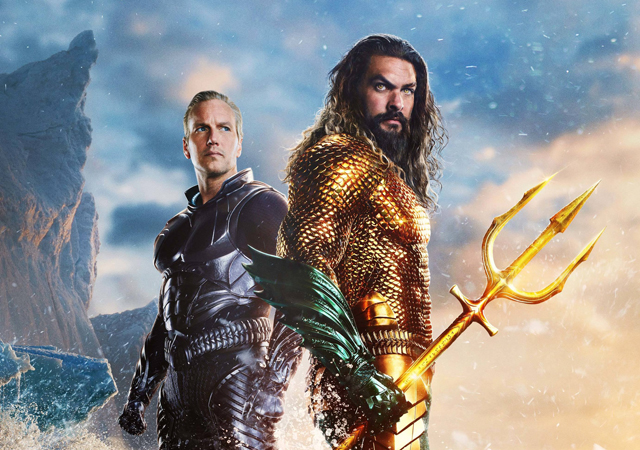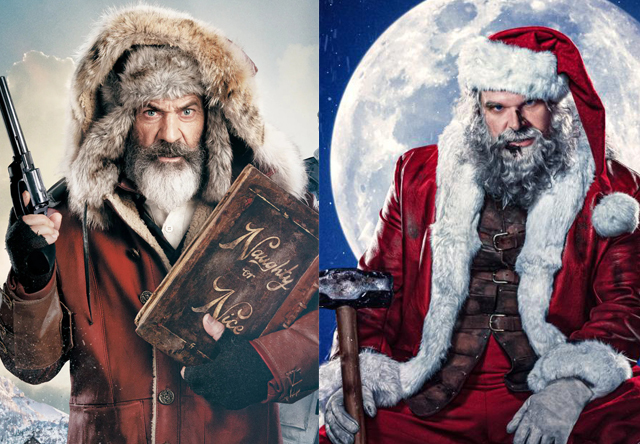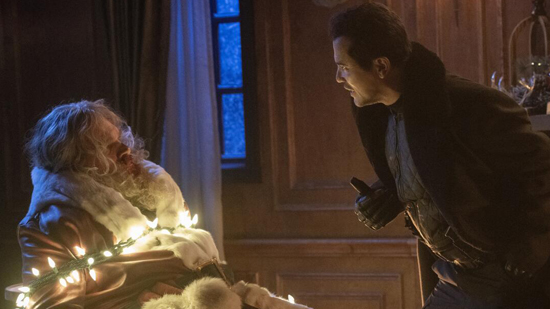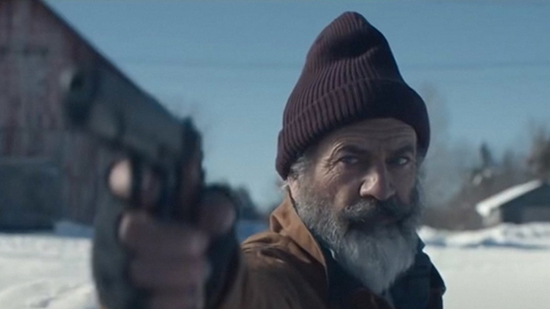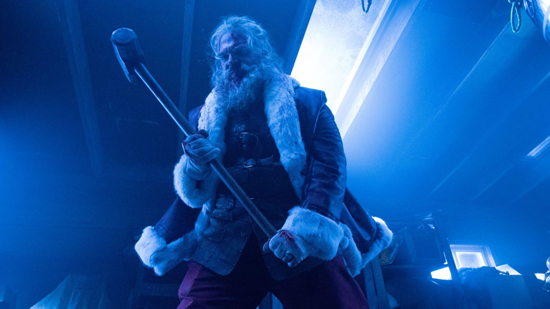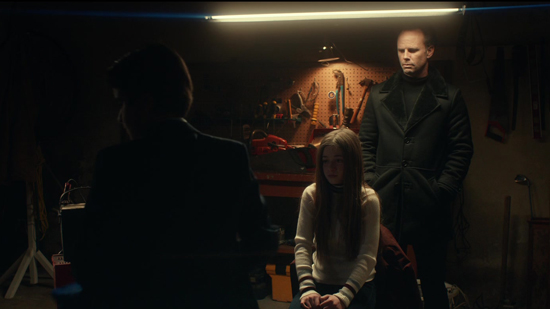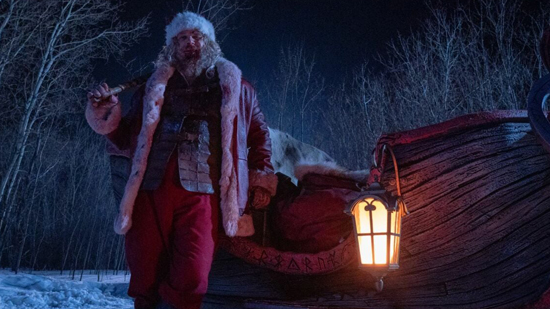
2023 was a strange year for the movies. I don’t think anyone saw the outcome of this year coming, especially not myself. This year saw many once dominant forces at the box office fall off hard; from Marvel, to DC, to Indiana Jones, to Fast and the Furious, to Mission: Impossible. This summer would have been one of the most disastrous on record had it not been for the unlikeliest of saviors; the unexpected box office power duo of Barbie and J. Robert Oppenheimer. But the biggest story of the past year was undoubtedly the behind the scenes labor battles that shook up the industry for nearly half a year. The Writer’s Guild of America went on strike in early May and the Screen Actors Guild followed them to the picket line soon after in July, creating the largest strike period in Hollywood history. For six months, Hollywood was ground to a halt as the studios and the unions dueled over the direction of the industry’s future. Thankfully, the unions came out victorious, receiving fair deals that achieved most of the goals that they desired to have on their new contract, chief among them protections from AI and revised residual compensation reflective of the growing streaming market. However, because the studios unnecessarily dragged their feet on making this new deal with the unions, it created a six month backlog in production that unfortunately is going to be felt throughout Hollywood for years to come. The studios as a result are pushing back even more of their upcoming releases because of this delay, which is already giving more headaches to film distributors and theaters, who themselves are still in recovery mode post-pandemic. It was a year overall of a lot of pain for the industry, as studios had to reconcile with the fact that their big push into streaming was not panning out like they expected and that they had neglected to fairly compensate their talent with fair share of that expansion, leading to an overall downturn in quality across the industry.
2024 is expected to be a year of re-building for many of the studios as they re-assess their futures. Disney for the most part is taking the first half of the year off as they moved their Spring releases of Snow White and Pixar’s Elio to 2025. Given how their 2023 went, with a string of disappointments, it’s probably for the best that they hedge their bets in order to regather their strength. Warner Brothers and Paramount are even considering a merger in order to salvage their fortunes after wasting billions on chasing fortunes on streaming. Because of last year’s strike, we are seeing a much less robust Spring season this year, as most films that were supposed to come out in the months ahead have been pushed back to accommodate for the backlog created by the strikes. Some of the movies coming out in Early 2024 are even movies that were supposed to come out in 2023, but were unable to meet their release because the strike prevented the cast from assisting in the promotion of the films, which did have an effect on the overall box office of this Fall’s slate. Still, there are enough movies to talk about in the early part of this upcoming year. Like always, I will be discussing the must sees, the movies that have me worried, and the movies to skip of the early film season. These previews are purely my own takes based on the level of buzz and effectiveness I see with the marketing, and my predictions can be off sometimes when all is said and done (and oftentimes have). So, with all that said, let’s take a look at the Movies of Early 2024.
MUST SEES:
DUNE: PART TWO (MARCH 1)
Without question the must see movie of Early 2024, and possibly all of the year itself. This is a movie that we should have already seen already, but because of the strike Warner Brothers decided they couldn’t have this movie make it’s November 3rd release date without the all-star cast there to help with the marketing. Sadly, this took the highly anticipated second chapter to the Oscar-winning original out of awards contention for this year. If this movie released on schedule, who knows how different the Awards season chatter would be right now. Still, thankfully it’s a movie that we are still getting anyway and hopefully the extra four months will be worth the wait. Denis Villeneuve’s Dune (2021) was an unexpected triumph of cinema when it first released, managing to gross over $100 million at the box office even in a still pandemic affected market and despite Warner Brothers misguided day and date theatrical and streaming release strategy at the time. The film also managed to snag an impressive four Oscars in the technical categories, and was nominated for Best Picture, which thankfully ensured that this second part would be greenlit. It seems short-sighted now that the studio didn’t film these movies back to back ala Lord of the Rings, as the first film only covers half of Frank Herbert’s seminal sci-fi masterpiece. But, Villeneuve now gets to complete the story, and it looks like he’s done so in spectacular fashion. The movie definitely demands to be seen on the biggest screen possible, and I’m sure it’s going to dominate like no other in IMAX. What I’m looking forward to are the newest additions to the cast, including Florence Pugh as Princess Irulan, Austin Butler as Feyd-Ruetha, and the legendary Christopher Walken as the Emperor. And with Wonka doing well at the box office right now, Timothee Chalamet has some box office wind in his sails leading up to the release of this film. Here’s hoping Denis Villeneuve sticks the landing with his monumental sci-fi epic.
CIVIL WAR (APRIL 26)
Alex Garland is without a doubt one of the most unique voices to emerge in science fiction writing over the last couple decades. Starting off with writing films like 28 Days Later (2002), Sunshine (2005) and Dredd (2012), Garland in the last decade has started to work behind the camera as a director and has shown equal prowess as a visionary filmmaker as well. His unique voice has tackled common sci-fi tropes in interesting new ways, like examining the dangers of AI run amok in Ex Machina (2015), or looking at an alien invasion unlike any we’ve seen before on the big screen with the trippy Annihilation (2018). His newest film is much less out of this world science fiction and more of a speculative, future history story that sadly feels all too relevant to our time. Civil War showcases what a wartime conflict would look like in modern times if it broke out in the United States. This is certainly the most ambitious project that Alex Garland has taken on to date (same with the studio making it, A24). But the interesting angle that Garland is going with in this movie is seeing the conflict through the eyes of war correspondents. This angle is a smart one to take because it allows the movie to remain grounded in a believable reality as it puts the audience right in the middle of the conflict. It’s not a movie concerned about the sides being taken, but rather gives us a look at the ugliness of war, transposed into a place that hasn’t seen conflict on it’s soil since the last Civil War. Having war correspondents be the witnesses of this conflict is also smart, because it helps the movie remain focused on it’s story rather than getting bogged down in world-building, which most other Hollywood blockbusters would fall victim to and get cluttered. Hopefully Garland is able to deliver on the promise of this premise. It will be interesting to see the responses to this film, considering that we are about to enter another contentious and divisive election cycle that by all accounts will be ugly. Perhaps Alex Garland is giving us the wake-up call that we need to understand the dark path we are headed towards, given who we might put into office.
GODZILLA X KONG: THE NEW EMPIRE (APRIL 12)
I know this is a weird one to pick, but sometimes it doesn’t hurt to include a little junk food in the diet. Legendary Pictures’ Monsterverse has gone through a bit of an evolution over the last decade, and one that I think has worked out for the better. The big problem that I had with the Gareth Edwards directed Godzilla (2014) that launched this franchise was that it took itself too seriously. The best part of the movie was always when the titular King of the Monsters showed up, but sadly those moments were few and far between. Instead, the movie had us following the human characters, who were all sadly generic and uninteresting, despite being played by some great actors. The introduction of King Kong into this franchise with Kong: Skull Island fared better because it gave us the audience more of what we wanted; more time with the central monster and more definable personalities among the human characters. When we finally got the team up film we were promised with Godzilla vs. Kong (2021), Legendary seemed to finally have the winning formula, and that was to embrace the sillier side of this franchise. What matters at the end of the day with these films is that we get to see the two iconic monsters share the screen and that the movie knows to let all the other stuff like character development and plot melt away. In other words: just let them fight. Godzilla vs. Kong was a nice bit of cheesy fun that we desperately needed after the worst of the pandemic. Thankfully, it looks like the people at Legendary Pictures are sticking with the formula and still leaning into the sillier side of this franchise. You can tell that by introducing a new pink color power set for Godzilla that this franchise is in no hurry to get this franchise grounded back into reality, and that is a bit refreshing. I know Godzilla purists are going to complain, especially after the release of Toho’s acclaimed Godzilla Minus One. But, given the lack of true entertainment in this early part of the year, it will be nice to have at least one movie that understands it’s limits as pure popcorn entertainment and rolls with it.
MICKEY 17 (MARCH 29)
This movie releases in a mere matter of months, and yet we still know so little about it, or seen anything other than a 30 second teaser released over a year ago. But, there is still a lot to be excited about with this upcoming film. For one, it’s the first film directed by Oscar-winner Bong Joon-ho after his history making Parasite (2019) became the first film ever not in the English language to win Best Picture. Also netting a Best Director win for himself, Bong Joon-ho garnered a lot of attention in the last couple years with regards to what he would do next. Interestingly, he has decided to not make another film in his native Korean language like he did with Parasite. Instead he’s making a film in English, which is not new for him, considering that he’s done it before with Snowpiercer (2014) and Okja (2017). What is especially exciting is that his newest film is also a return for him to the science fiction genre. His last foray into pure science fiction was Snowpiercer, which was in my opinion one of the best sci-fi films of the last decade. What we know of the plot is based on what we know of the source material; the novel of the same name by Edward Ashton, which involves cloning and deep space exploration. But, what isn’t known is what Bong Joon-ho will bring to the story with his own vision. It’s also a good sign that he is working with a very outside of the box thinking kind of leading man with Robert Pattinson. Pattinson has taken on many quirky roles in the past, so it will be interesting to see how well he works under Bong Joon-ho’s direction. Hopefully more information and another trailer releases for this movie soon, because it will be interesting to see what a unique filmmaker like Bong Joon-ho does with the confidence that a fresh Oscar win gives him going into his next project.
THE BOOK OF CLARENCE (JANUARY 12)
When you attempt to satirize religion and scripture in any way, you better be prepared to walk through a gauntlet of eggshells. But, if you manage to find that right balance, you can come up with some truly legendary comedy, as Monty Python and Mel Brooks have shown us in the past. Writer and director Jeymes Samuel takes aim at the time period of Jesus Christ, but it looks like he wisely avoids turning Christ into the target of his punchlines. Instead, what it looks like he’s doing with The Book of Clarence is to make a statement about modern day Influencer Culture by putting it within the context of a biblical time period. Here we see the titular Clarence become jealous of Jesus’ clout, and he attempts to scam his way into becoming the Messiah so that he can emerge beyond Christ’s shadow. It’s an interesting angle that could also extend a critical eye towards organized religion, which itself is built upon the show boating and scamming that is synonymous with influencer culture. It’s uncertain exactly what angle Jeymes Samuel is going to go with in his film, but it certainly looks like there’s going to be some hilarious situations that satirize the things we know from scripture and that time period. It definitely looks like Samuel is drawing inspiration from Monty Python’s Life of Brian (1979) with some of the tone, and I hope he’s ready for some of the firestorm that may erupt in response to this movie. Jeymes already delivered an interesting deconstruction of the American Western with The Harder They Fall (2021), framing it through a Black American perspective (and it features one of the most hilarious visual gags I’ve seen in recent memory). Hopefully he delivers the same kind of intelligent satirical eye to this story with a biblical center.
MOVIES THAT HAVE ME WORRIED:
GHOSTBUSTERS: FROZEN EMPIRE (MARCH 29)
Try as they might, Hollywood has yet to match the one of a kind magic that was the comedy/horror masterpiece called Ghostbusters (1984). Over the last 40 years, there have been sequels and multiple reboots, but nothing has yet to come close to the original, and it’s probably the case that nothing ever will. The 1989 sequel has moments, but lacks the same novelty and focus. The 2016 remake is a textbook example of how not to re-start a franchise as it courted controversy that it was not prepared to tackle, and sadly it negatively impacted the chance to bring true inclusivity into the casting of the franchise. Jason Reitman, son of the late Ivan Reitman who directed the original classic, decided to bring his own voice to the franchise and pick up where his dad left off. His 2021 reboot was different in tone, taking the lore and story a bit more seriously than past efforts, which is honestly closer to the original vision of the franchise’s co-creator Dan Aykroyd. But, even though it was a marked improvement over the 2016 version, it still was a movie that relied too heavily on nostalgia for the past. Seriously, we’re just going to rehash Gozer again as the main threat? Jason Reitman’s Ghostbusters: Afterlife still did well enough to get a sequel greenlit by Columbia. Ghostbusters: Frozen Empire does earn some points by trying something different; with the Big Apple being threatened by an ice storm brought upon by a supernatural force. It’s also interesting that they managed to get everyone back, not just from the last film, but even the legacy actors as well (even the always elusive Bill Murray). Still, I feel this is a franchise that still has a lot to prove in order to find it’s way out of the shadow of the original classic. It’s been 40 years and still nothing so far convinces me that Frozen Empire will be the movie that will justify a whole new generation of Ghostbuster movies to get excited about.
ARGYLLE (FEBRUARY 2)
Talk about over-exposure. The above trailer seems to be attached to every movie playing at the multiplex at this very moment, so if you are someone like me who visits movie theaters on a regular basis, this trailer has been played ad nauseum for several months now. Now, that doesn’t mean that the end result could end up being terrible, but the fact that Universal and Apple Studios are flooding the market with advertisement for this film is not a good sign either. The latest film from Matthew Vaughn comes as new territory for the director, but still working within a genre he has a lot of experience with. Vaughn has spent the last decade building up the Kingsman franchise and this is his first original film in a long time. There are positive and negative signs for this movie based on Vaughn’s recent track record. For one thing, he has demonstrated a knack for taking actors not typically known for appearing in action movies and giving them a stand out action set piece that changes everything you thought you knew about them. The now famous one shot church fight scene with Colin Firth in Kingman: The Secret Service (2015) was a perfect example of this. In Argylle, it looks like he’s doing the same with his leads, Sam Rockwell and Bryce Dallas Howard, both of whom you wouldn’t expect to see in elaborate action set pieces. At the same time, Vaughn’s track record has been a bit spotty. His sequel Kingsman: The Golden Circle (2017) was a disappointing mess that sqaundered all of the goodwill of the first movie, and though it was a bit better, the prequel titled The King’s Man (2021) still couldn’t course correct well enough to salvage the waning franchise. Hopefully Matthew Vaughn is able to get his mojo back with Argylle, but given the zealous marketing campaign so far, I’m not seeing a lot of positive signs.
KUNG FU PANDA 4 (MARCH 8)
At least one thing works in Dreamworks Animation’s favor this spring. They no longer have to share the box office with their indsutry rival Pixar, Disney has moved their previously planned Spring 2024 release of Elio to Summer of 2025. Still times are troubled for Dreamworks Animation. The studio has failed to generate the same kind of energy at the box office that it once did in the last decade. 2023 was an especially rough year for all of the Animation titans. Disney’s Wish (2023) failed to ignite over the Thanksgiving weekend, and Dreamworks saw it’s two 2023 releases, Ruby Gilman: Teenage Kraken and Trolls Band Together both underperform expectations, the former becoming the lowest grossing film in the studios’ 25 year history. It’s a sad result given that they ended the previous year on a high note with their best film in years with Puss in Boots: The Last Wish (2022). Thankfully for Dreamworks, their next film on the release calendar is the fourth film in one of their most resilient franchises. Jack Black returns as the lovable Po the Panda and in this adventure he is facing off against a shape-shifiting villain voiced by Viola Davis. While the Kung Fu Panda films have always been well-animated, they’ve been a little inconsistent when it comes to story. In my opinion, I thought the first one was alright, I loved the second one, and thought the third one was bland and forgettable. Thus far, this fourth film really lacks anything new or interesting to hook me back in. Maybe long time fans will be more interested than me, but for me a film franchise on it’s fourth round needs to have something more interesting than a new villain of the week to justify it’s existence. Puss in Boots: The Last Wish was a movie sequel that really went above and beyond what was called for with it, and to see Kung Fu Panda just revisiting the same routine just feels uninteresting to me.
LISA FRANKENSTEIN (FEBRUARY 9)
This is one of those movies that could honestly go either way. We could be witnessing the birth of a new cult classic in horror comedy, or it could be an embarrassing dumpster fire that bodes ill for all involved. One of the red flags is that it’s written by Diablo Cody. Cody, an Oscar-winner for Juno (2007) has in the past had a bad habit of using cringey slang words in her dialogue that make her scripts sound way out of touch with the age groups that she’s trying to connect with. But, when used well, she can write some very funny and excessive genre films, particularly in this horror comedy mode. One of the interesting things about Lisa Frankenstein is that it marks the directorial debut of Zelda Williams, daughter of the late great Robin Williams. A movie like this is a big swing for a first time director, but it looks like a bold statement as well to signal that Ms. Williams is ready to put her voice out there as a filmmaker. One thing that might be a plus for the movie is that it looks like the kind of film that Tim Burton used to make but no longer does, and thankfully Zelda Williams is coming in to fill that void. The whole tone of the movie also seems to be refreshingly tougne in cheek, which hopefully doesn’t spoil the movie as a whole, as some horror comedies sometimes lack the right amount of laughs or scares to work as well as they should. One thing that I do like in the trailer is that the main lead, Kathryn Newton, is really aiming for the fence with her performance; vamping it up in a deliciously comical way that could go a long way in making this movie work. It all comes down to the execution, and hopefully all of these talented ladies pull it off and knock ’em dead.
MOVIES TO SKIP:
MADAME WEB (FEBRUARY 14)
Given the disappointing year that they experienced, Marvel is sitting out most of the next year with only one official MCU title getting released in 2024; the eagerly anticipated Deadpool 3. While disappointing to fans, this is honestly a much needed break that Marvel desperately needs in order to recalibrate and get their mojo back. Sadly, it seems like Sony Pictures didn’t get the memo with their own licensed Marvel films in the Sony Spider-verse. In 2024, Sony is set to release at least 3 films all connected to their fledgling Spider-Man adjascent cinematic universe, all mostly centered around some of the webslinger’s rogues gallery of villains. In the summer we get a movie devoted to Kraven the Hunter (2024), which was pushed back from a fall release this year during the strike, and in Fall 2024 we get the third film in the Venom franchise, starring Tom Hardy. But before all that, we get this movie devoted to one of the most obscure Spider-Man characters in the Marvel canon. Madame Web tells the origin story of the mystical being central to the multiversal storylines of which Spider-Man is a part of. There’s not much to say about this movie other than it representing Sony really scrapping the bottom of the barrel in order to fill out their, I guess you can call it “Venomverse.” Sadly, apart from Tom Hardy’s quirky performance and the stellar animated Spider-Man films, nothing about the Sony produced Spider-verse films have stood out. Madame Web’s agressive blandness is not going to convince anyone that Sony is on their right track with their franchise, and considering that it’s the same studio responsible for the train wreck that was Morbius (2022), it’s highly likely that this movie is only going to compound the already dire state that comic book movies are in right now.
MEAN GIRLS (JANUARY 12)
Truth be told, this was never my kind of thing to begin with, but even still, a movie like this feels doomed and unnecessary. Basically it is adaptation of a Broadway musical version of the original 2004 film. While I’m sure that long time fans of the original will be excited to see this, I also think that it’s likely going to disappoint a lot of people too. For one thing, it’s just rehashing a story we already know, but doing so 20 years after the fact. A lot of the things that felt fresh and relevant in the original are going to feel dated in 2024. Also, the movie is attempting to adapt a musical made for the stage, but still film it like the original film. I have a feeling it’s going to take away some of the pagentry of live performance that most musicals benefit from, and make the dance and song numbers feel awkward. That’s what happened with the very unpleasant Dear Evan Hansen (2021) film, and I am already getting the same uncomfortable vibe from this trailer. Can pros in the cast like Jon Hamm and Tina Fey pull this movie out from that unfortunate association, or are we looking at another Evan Hansen fiasco. Unfortunately, I’m seeing a lot of parallels so I imagine we are in for another bad musical experience.
THE BEEKEEPER (JANUARY 12)
What the hell happened to David Ayer. The action movie director was on the rise in the early 2010’s with two acclaimed movies back to back; the cop drama End of Watch (2012) and the WWII action flick Fury (2014). When he was next given the offer to direct Suicide Squad (2016) for DC, it appeared that David Ayer was on the track for big things. But even despite seeing Suicide Squad earn a healthy box office return, many thought his adaptation of the comics was severly lacking and uneven. It didn’t help that his follow-up, the critically panned Bright (2017) for Netflix, also failed to live up to expectations. Since then, David Ayer has sunk down to being a B-movie director once again, with his 2020 film The Tax Collector performing poorly even by pandemic standards. His next film looks to be continuing his slide down into further irrelevancy, as he is working on yet another Jason Statham vehicle that looks nothing more than another paycheck movie that the star can sleepwalk through. One would hope that David Ayer can find that special project that can once again help him climb back into the upward career trend that he once enjoyed, but sadly this movie does not look the kind of movie to reverse those fortunes at the moment.
So, there you have my preview of the movies coming out in Early 2024. It’s going to be a quiet start to the year, with very few studio driven releases of note. Definitely Dune: Part Two is the movie that is going to dominate most of the conversation this Spring if it lives up to the high expectations that we have for it. It’s just a shame that a grandiose movie like that had to be a victim of the studios’ mismanagement of their response to the strikes. A lot of the missing presence of big films during these next few months is largely due to the studios misreading the situation and thinking that they could wait out the unions in order to squeeze them into negotiating towards lower terms on the deal. It didn’t work, and now the studios have few films to show off and boost their quarterly profits in the early part of next year. The only ones who seem to be moving forward into the next year without disruption to their schedules are the indie producers like A24, because they did the right thing and negotiated fair deals with the unions independent of the big studios, allowing them to continue production while the rest of the industry was shut down. So, it’s going to be an overall quiet season where the movies that really shine will likely be the smaller, independent films. Still, there are bigger movies that are certainly out there to see. Because they’ve decided to take a time out to regroup throughout this opening part of the year, Disney is actually using this time to right a cinematic wrong and allow the three Pixar films that went straight to streaming during the pandemic (Soul, Luca, and Turning Red) to finally have full theatrical releases as a make-up to the one division in their company that defied the slump and overcame a bad start to become a sleeper hit with last year’s Elemental. My hope is that 2024 is a healing year for Hollywood, which has gone through a rough couple of years both through circumstances they couldn’t control (the pandemic) and through a force that they should’ve handled better than they did (the strikes). And then hopefully after that, we’ll see the industry booming again in 2025. For right now, I hope my preview has given you a good sense of what to expect in the next couple of months. Here’s hoping for a good start to 2024 at the movies even with all the turmoil that the last year has carried over into it.
